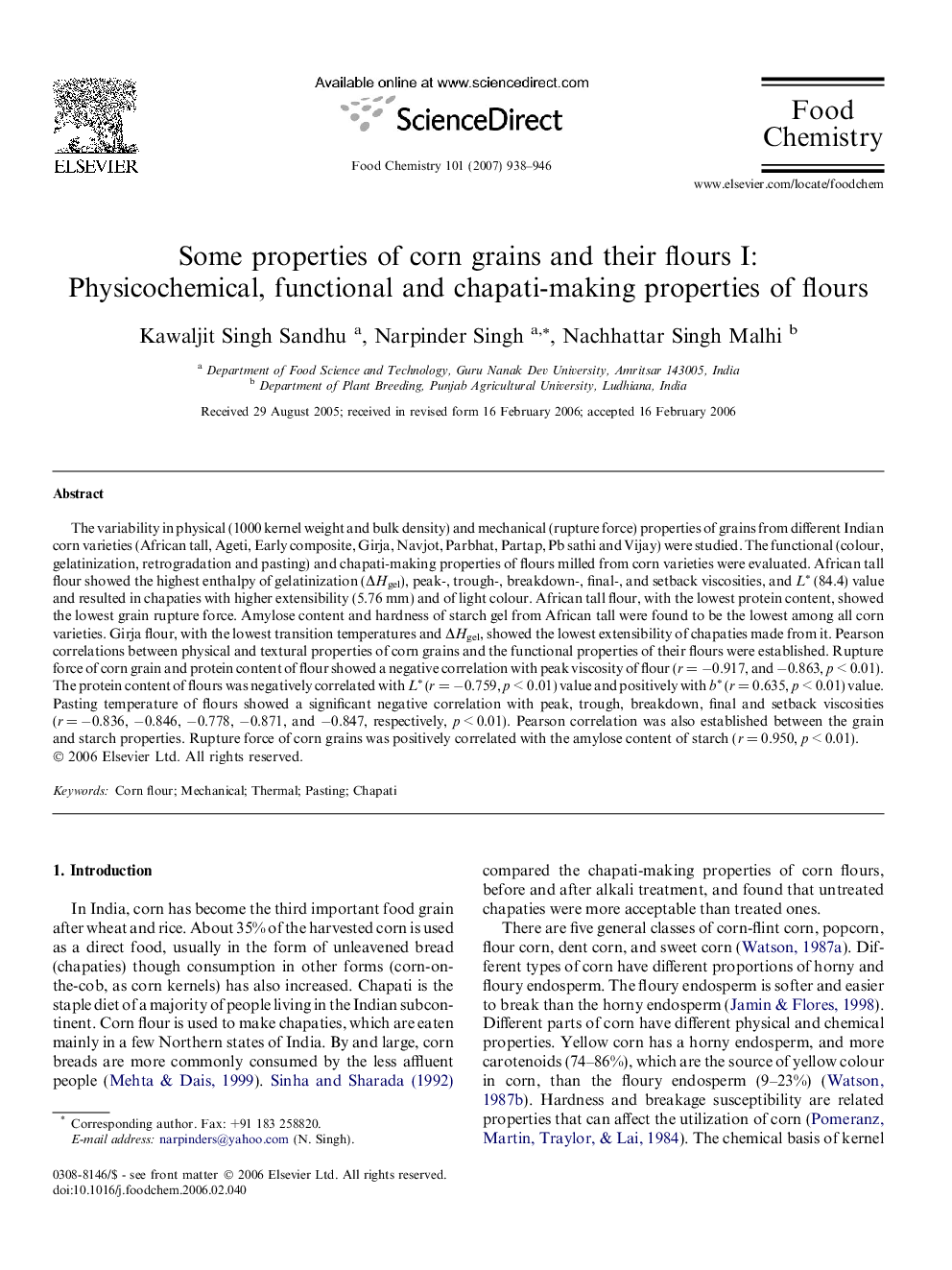| Article ID | Journal | Published Year | Pages | File Type |
|---|---|---|---|---|
| 1191811 | Food Chemistry | 2007 | 9 Pages |
The variability in physical (1000 kernel weight and bulk density) and mechanical (rupture force) properties of grains from different Indian corn varieties (African tall, Ageti, Early composite, Girja, Navjot, Parbhat, Partap, Pb sathi and Vijay) were studied. The functional (colour, gelatinization, retrogradation and pasting) and chapati-making properties of flours milled from corn varieties were evaluated. African tall flour showed the highest enthalpy of gelatinization (ΔHgel), peak-, trough-, breakdown-, final-, and setback viscosities, and L∗ (84.4) value and resulted in chapaties with higher extensibility (5.76 mm) and of light colour. African tall flour, with the lowest protein content, showed the lowest grain rupture force. Amylose content and hardness of starch gel from African tall were found to be the lowest among all corn varieties. Girja flour, with the lowest transition temperatures and ΔHgel, showed the lowest extensibility of chapaties made from it. Pearson correlations between physical and textural properties of corn grains and the functional properties of their flours were established. Rupture force of corn grain and protein content of flour showed a negative correlation with peak viscosity of flour (r = −0.917, and −0.863, p < 0.01). The protein content of flours was negatively correlated with L∗ (r = −0.759, p < 0.01) value and positively with b∗ (r = 0.635, p < 0.01) value. Pasting temperature of flours showed a significant negative correlation with peak, trough, breakdown, final and setback viscosities (r = −0.836, −0.846, −0.778, −0.871, and −0.847, respectively, p < 0.01). Pearson correlation was also established between the grain and starch properties. Rupture force of corn grains was positively correlated with the amylose content of starch (r = 0.950, p < 0.01).
